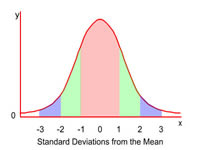“Lies, damned lies and statistics” is a familiar refrain, but an understanding of how to correctly interpret the results of any business-type analysis is critical to any business planning activity. But it is also important that the real-world data is modelled correctly in the first place to avoid the “garbage in, garbage out” syndrome.
 When developing a model, it is normally assumed that data follows a relatively straightforward distribution, such as the normal or Poisson. But what if this is not the case? Are there other, less familiar distributions which provide a better fit and hence significantly remove the accuracy of the modelling process? Similar questions arise with probabilities: whilst the normal distribution is often assumed to apply for large samples of data, very often a less known distribution may be appropriate.
When developing a model, it is normally assumed that data follows a relatively straightforward distribution, such as the normal or Poisson. But what if this is not the case? Are there other, less familiar distributions which provide a better fit and hence significantly remove the accuracy of the modelling process? Similar questions arise with probabilities: whilst the normal distribution is often assumed to apply for large samples of data, very often a less known distribution may be appropriate.
Once the most appropriate distribution has been identified, we can then proceed to the next stage of analysis using one of Operational Research, Forecasting or Business Modelling.
As part of ATOS Origin’s contract with Railway Settlement Plan, a regime to measure LENNON’s performance is required. AS&A thus analysed the distribution of response times to ten different LENNON queries.
Once an appropriate statistical distribution was determined for each, AS&A then generated probability tables of being of values being above selected target levels and thus the probability of penalties being paid for inferior performance.

